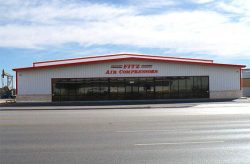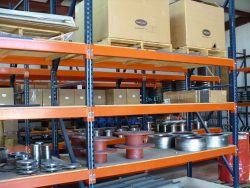What Is a Torque Converter Clutch
In the realm of automatic transmission systems, both in vehicles and industrial applications, the Torque Converter Clutch (TCC) stands as a pivotal innovation, significantly enhancing performance and efficiency. Although its importance might not be immediately evident to the layperson, the TCC is indispensable in the seamless operation of modern systems equipped with automatic transmissions.
Need to service or repair your torque converter? Please fill in the form for a quote or call 1.888.220.3489.
The advent of automatic transmission systems marked a paradigm shift in driving and industrial operations, introducing an era of seamless power transfer without the need for manual gear shifts. These systems utilize a sophisticated array of gears, clutches, and torque converters to efficiently manage power delivery from the engine or motor to the operational endpoints, ensuring smooth and efficient functionality.
This comprehensive guide aims to unpack the mechanics and benefits of the torque converter clutch. By delving into the workings of the TCC and its impact on efficiency, readers can gain insights into the technological strides that have been made, contributing to smoother operations and enhanced fuel economy across both automotive and industrial sectors.
What is a Torque Converter?
Torque converters are fundamental components in automatic transmission systems, enabling power transfer from the engine to the transmission and ultimately to the wheels or operational machinery. In the automotive sector, torque converters allow for seamless acceleration by replacing the manual clutch. In industrial applications, they serve a similar function, facilitating efficient power transfer in heavy machinery and equipment without the need for manual gear shifts.
Torque converters are fluid coupling devices with several key components, including the impeller, turbine, stator, and transmission fluid. These components work in tandem to transmit power efficiently while allowing for smooth acceleration and deceleration. They are also used in industrial parts and equipment.
Industrial Hydraulic Torque Converters
Industrial hydraulic torque converters, like those used in Gardner Denver Air Compressors, are similar to those used in automotive applications. However, they also have significant differences in design and function.
Similarities
Both automotive and industrial hydraulic torque converters operate on the principle of fluid coupling, utilizing hydraulic fluid to transmit power from the input shaft (driving element) to the output shaft (driven element). Both torque converters typically consist of an impeller, turbine, and stator, which work together to transfer torque and facilitate power transmission.
Differences
These two torque converters vary in application, size and capacity, fluid type, and control. The much larger industrial hydraulic torque converters are used in various industrial applications, such as heavy machinery, industrial air compressors, construction equipment, and marine propulsion systems, to transmit power between hydraulic pumps and motors. On the other hand, the smaller automotive torque converters are primarily used in vehicles to transmit power from the engine to the transmission.
Main Components of a Torque Converter for Vehicles
A torque converter has the following main components:
- Impeller: The impeller, also known as the pump, is attached to the engine’s crankshaft and rotates with it. As the impeller spins, it creates a flow of transmission fluid within the torque converter.
- Turbine: The turbine is connected to the transmission input shaft and is housed within the torque converter. When transmission fluid flows from the impeller to the turbine, it causes the turbine to rotate, transferring torque to the transmission.
- Stator: The stator is positioned between the impeller and turbine and serves to redirect the flow of transmission fluid. By redirecting fluid flow, the stator increases torque multiplication and enhances the efficiency of the torque converter.
- Transmission Fluid: Transmission fluid is crucial for the operation of the torque converter, as it facilitates the transfer of power between the impeller, turbine, and stator. Additionally, transmission fluid helps to dissipate heat generated during operation and lubricates the internal components of the torque converter.
- Lockup Clutch: A lockup clutch in a torque converter mechanically connects its impeller and turbine to eliminate slippage during constant-speed driving, like highway cruising. This direct connection boosts transmission efficiency, reducing energy loss and improving fuel economy. Controlled by the vehicle’s engine or transmission control module, it engages automatically based on factors like vehicle speed and engine load. The lockup clutch also reduces heat buildup by eliminating slippage, enhancing transmission longevity.
The primary function of torque converters is to transmit power from the engine to the transmission while allowing for smooth and efficient operation. As the engine’s crankshaft rotates, it spins the impeller within the torque converter, creating a flow of transmission fluid. This fluid flow causes the turbine to rotate, transmitting torque to the transmission input shaft.
Torque converters play a crucial role in adapting the engine’s power output to the varying demands of driving conditions. Torque multiplication and fluid coupling allow torque converters to accelerate smoothly from a standstill and maintain power delivery across various speeds. Overall, torque converters contribute to vehicles’ performance, efficiency, and drivability with automatic transmissions.
How Does a Torque Converter Clutch Work?
The TCC engages to establish a direct mechanical link between the engine and transmission, bypassing fluid coupling. Eliminating slippage enhances power transmission efficiency, improves fuel economy, and reduces heat generation within the transmission for smoother operation and prolonged component lifespan.
Here are the details regarding its operation:
Engagement and Disengagement
The TCC engages and disengages to create a direct mechanical link between the engine’s crankshaft and the transmission input shaft. This connection bypasses the fluid coupling action of the torque converter.
Conditions Triggering TCC Activation
Activation of the Torque Converter Clutch (TCC) is generally initiated based on several critical factors, including the speed of the machinery, the load on the engine or motor, the position of the throttle in vehicles, or equivalent control settings in industrial equipment, and the temperature of the transmission fluid. These parameters ensure the TCC engages at the optimal moment for efficient power transfer, whether in automotive applications or in various industrial operations.
Mechanisms Involved in TCC Function
The TCC utilizes a lockup clutch mechanism to establish a direct connection between the engine and transmission, reducing slippage and improving efficiency.
Impact of TCC Engagement on Power Transmission
- Reduction of Slippage Between Engine and Transmission: By eliminating slippage, TCC engagement ensures more efficient power transfer from the engine to the transmission, improving overall drivetrain efficiency.
- Enhancement of Fuel Efficiency: TCC engagement reduces the energy lost due to slippage, resulting in improved fuel economy, especially during highway cruising and steady-state driving.
- Reduction of Heat Generation Within the Transmission: TCC operation minimizes friction and heat generation within the transmission, contributing to the longevity of transmission components and reducing the risk of overheating.
Benefits of a TCC Installation
The Torque Converter Clutch (TCC) plays a dual role in both vehicles and industrial machinery, reducing heat, improving fuel or energy efficiency, and enabling smoother operation without manual intervention. It provides essential benefits, enhancing efficiency and reliability across various applications, ensuring a seamless experience for users and operators in both sectors.
1. Improved Fuel Economy
The TCC enhances fuel efficiency by eliminating slippage between the engine and transmission, ensuring more efficient power transmission. Comparisons of fuel consumption with and without TCC engagement demonstrate noticeable improvements in fuel economy during highway cruising and steady-state driving conditions.
2. Enhanced Driving Experience
TCC engagement results in smoother acceleration and deceleration, providing passengers with a more refined driving experience. During heavy loads, the TCC reduces engine strain by maintaining a direct mechanical connection between the engine and transmission. This ensures optimal power delivery without excessive wear on components.
3. Extended Lifespan of Transmission Components
By minimizing slippage and reducing heat generation, the TCC helps to minimize wear and tear on transmission parts, leading to an extended lifespan for critical components. The prolonged durability of transmission components translates into cost-saving implications for vehicle maintenance, as drivers experience fewer transmission-related issues and reduced repair costs over the vehicle’s lifespan.
Common Issues and Maintenance of Torque Converter Clutch
Like any vehicle component, the TCC will require maintenance checkups to ensure it runs optimally. Here are some common issues you may encounter if your vehicle’s torque converter clutch requires repairs.
Symptoms of TCC Failure
The common signs of TCC issues include erratic shifting, slipping transmission, engine stalling when coming to a stop, and illuminated warning lights on the dashboard. When you spot these symptoms, having your vehicle checked by a mechanic is best.
Causes of TCC Malfunctions
TCC problems can arise due to worn-out clutch components, fluid contamination, electrical issues, or mechanical failures within the transmission system.
Importance of Regular Transmission Servicing
Regular transmission servicing involves fluid checks, filter replacements, and TCC adjustment or replacement if necessary. Technicians inspect TCC components for wear and damage, ensuring optimal performance and longevity.
Skilled technicians are pivotal in identifying and resolving TCC problems, employing advanced diagnostic equipment to pinpoint issues, carrying out detailed examinations, and executing necessary repairs or replacements to reinstate the TCC’s performance. Routine maintenance by experts is essential to avert TCC failures, guaranteeing the efficient functioning of both vehicle and industrial transmission systems.
World-Class Torque Converter Clutch Maintenance with Fitz Equipment
Fitz Equipment offers expert torque converter clutch maintenance services and industrial air compressor repair, ensuring optimal performance and longevity of your industrial machinery. With our skilled technicians and comprehensive servicing procedures, we provide unparalleled value, minimizing downtime, maximizing efficiency, and extending the lifespan of your equipment.
Contact Fitz Equipment today and leverage over 100 years of combined industry experience to ensure maximized uptime and proper air compressor maintenance.




